If you’ve ever wondered what goes on behind the scenes of sumo wrestling, this guided tour in Tokyo offers a rare, authentic glimpse into this ancient sport. For $112 per person, you get about three hours of close-up access to a sumo stable, where you’ll witness a live morning practice, learn about the sport’s rituals from a journalist, and snap photos of the wrestlers in action. Led by a knowledgeable guide, this experience is not just about watching wrestling; it’s about understanding a piece of Japan’s cultural fabric.
What we love about this tour is how it combines insider access with expert commentary. The guide, a journalist, offers detailed insights into sumo’s history and traditions, making the experience educational as well as lively. And the opportunity to photograph wrestlers during their practice—something that’s usually off-limits—adds a special touch. On the flip side, a consideration is that the tour involves sitting on the floor, so it may not suit everyone, especially those with mobility issues or discomfort sitting in traditional Japanese style.
This tour is perfect for sports enthusiasts, culture seekers, and anyone curious about Japan’s unique traditions. If you’re looking for an intimate, informative, and authentic experience that goes beyond tourist clichés, this sumo tour is a prime choice.
Key Points
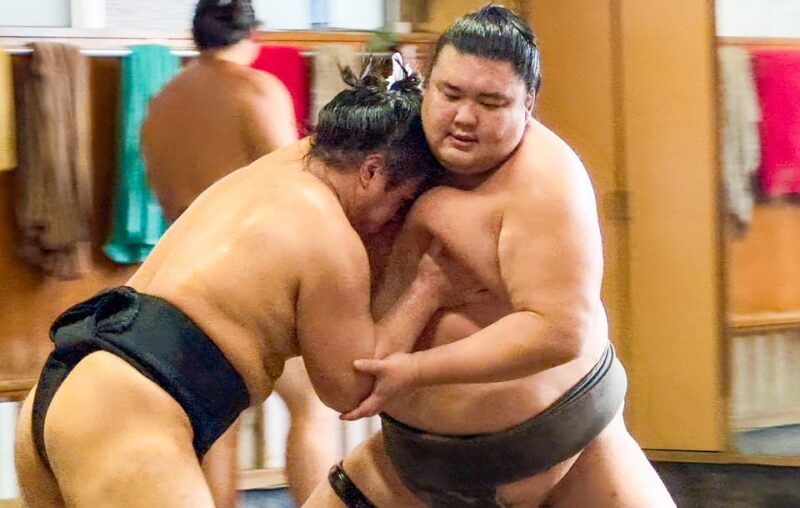
- Authentic Access: Special permission to visit a sumo stable and see wrestlers train up close
- Expert Guidance: Learn from a journalist with deep knowledge of sumo rituals and history
- Photographic Opportunity: Capture memorable photos during live practice
- Cultural Insight: Understand the traditions and significance of sumo wrestling in Japan
- Value for Money: Offers a well-rounded experience for its price point
- Accessibility: Not suitable for wheelchair users but accessible for most able-bodied travelers
A Well-Rounded Experience in the Heart of Tokyo
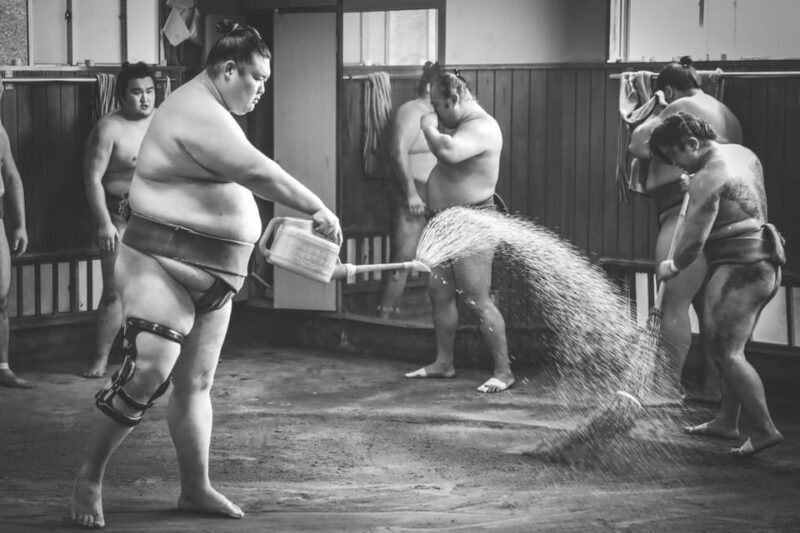
Starting at the vibrant Ryogoku area—a hub for sumo and traditional Edo culture—you’ll meet your guide just a short walk from Ryogoku Station. From there, the tour begins with a quick transfer (a 5-minute walk or drive) to the Takasago-beya Sumo Stable, where the real magic happens. This is where the authentic sumo training occurs, and where you’ll witness wrestlers in their morning routine, often in a setting that feels both disciplined and surprisingly intimate.
The guided tour of the stable lasts roughly two hours, allowing plenty of time to observe wrestlers practice, ask questions, and absorb the atmosphere. The stable visit is a rare window into a world mostly hidden from the public—wrestlers training on tatami mats, performing rituals, and preparing for their bouts. This behind-the-scenes look is a highlight, especially since special permission from the stable ensures you can experience this part of sumo life firsthand.
Following this, you’ll enjoy a brief transfer (another 5 minutes) to the Rygoku Edo Noren, a cultural hub where you’ll get a 30-minute guided tour. This spot is a showcase of traditional Edo-period architecture and crafts, giving you a broader picture of Tokyo’s historical charm and the environment that nurtures sumo’s traditions. The quick stop here adds depth to your understanding of the region’s cultural background.
The entire experience concludes back at the starting point, giving you ample time to reflect on what you’ve learned and seen. As highlighted by reviewers, the tour’s small group size and guided explanations make it particularly memorable and personalized.
While in Tokyo, here are other experiences we've covered
What to Expect During the Tour
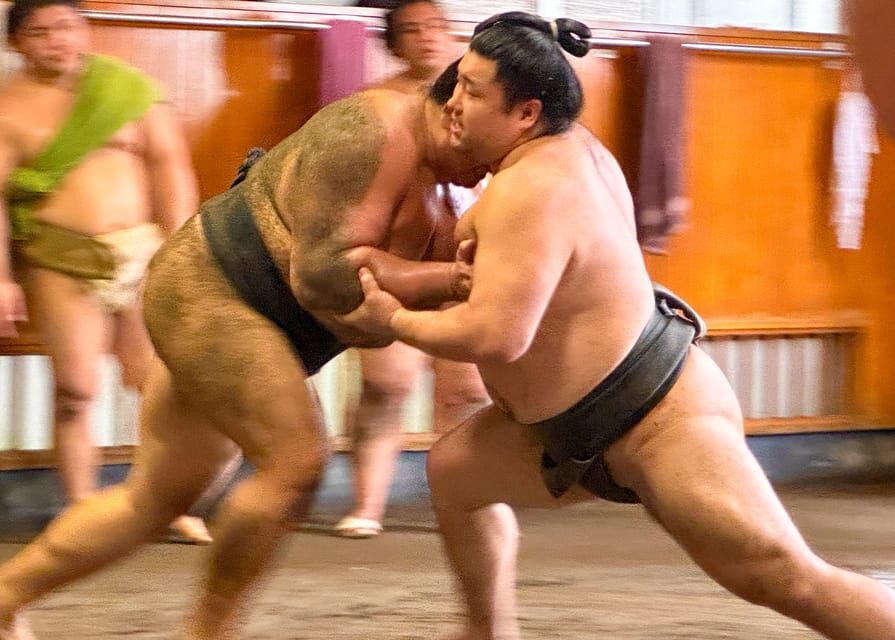
The Stable Visit and Practice Session
The core of the tour is witnessing a live sumo morning practice, a scene that’s usually off-limits to travelers and even many locals. You’ll see wrestlers in intense training, performing rituals, and honing their skills. Since sitting on the floor is involved, comfy clothes are recommended, and a camera is a must for capturing the wrestlers in action—though flash photography during practice is prohibited.
Learning the Rituals and Culture
Your journalist guide will explain the significance of the rituals, from the symbolic salt-throwing to the ceremonial movements performed before matches. These rituals aren’t just show—they’re believed to bring good luck and purity. One reviewer, Elizabeth, appreciated how the guide’s insight “was crucial in understanding the culture of sumo,” which enhanced her appreciation for the sport.
More Great Tours NearbyThe Cultural Context at Rygoku Edo Noren
This stop adds a layer of historical context, helping you appreciate how sumo is woven into Tokyo’s and Japan’s cultural tapestry. You’ll see traditional architecture and crafts, which underscore the sport’s long-standing traditions.
- Düsseldorf: Manga, mochi & more Düsseldorf’s Little Tokyo
- From Tokyo: Mt. Fuji Spanish & English Tour
- Downtown Los Angeles : Historic district & Little Tokyo
- Outdoor Escape Room in LA – Little Tokyo
- LA Little Tokyo to Olvera St Smartphone (App/GPS) Walking Tour
- 1-Day Mt Fuji and Hakone Sightseeing trip from Tokyo
Photos and Questions
The tour offers a rare opportunity to take photos during the practice, a significant perk for anyone wanting souvenirs of this experience. Plus, the guide is open to your questions, whether about wrestler ranks, rituals, or daily life in the stable.
The Itinerary Breakdown
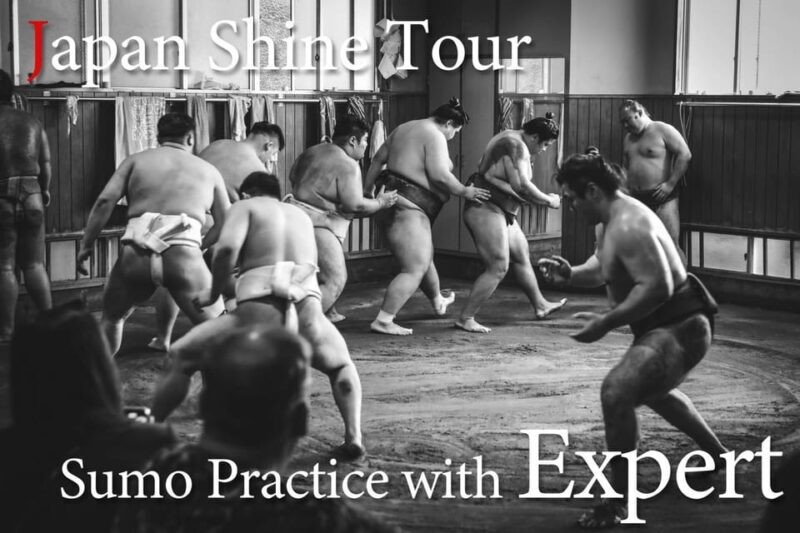
While the core of the tour is the two-hour stable visit, the itinerary also includes transfers—a small but important detail for understanding logistics and comfort. The stops are:
- Starting at Ryogoku subway station
- Transfer to Takasago-beya Sumo Stable (5 minutes)
- Guided tour in the stable (about 2 hours)
- Transfer to Rygoku Edo Noren (5 minutes)
- Guided tour of the cultural site (about 30 minutes)
- Return to the starting point (1-minute transfer)
This well-paced schedule balances immersive viewing with cultural commentary, making the most of your three hours.
The Cost and Value

At $112, this experience is in the mid-range for specialized tours in Tokyo. What makes it worthwhile is the access and expertise provided. The opportunity to see live sumo practice—something generally reserved for insiders—is priceless for fans and curious travelers alike.
The reviews confirm that many find this tour good value, especially considering the depth of insight and the exclusive access granted. Lennart, for example, states, “It was really worth it,” emphasizing the reputation of the stable and the quality of explanations.
Accessibility and Practical Tips
While the tour is wheelchair accessible, it’s important to note that the traditional setup of the sumo stable means sitting on the floor, which can be uncomfortable for some. Also, flash photography isn’t allowed during practice, so be prepared to enjoy the view without taking constant pictures.
Travelers should wear comfortable clothes—think layers and shoes suitable for sitting on tatami mats. Since meals and transportation aren’t included, plan to eat beforehand or explore local options afterward.
Who Will Love This Tour?
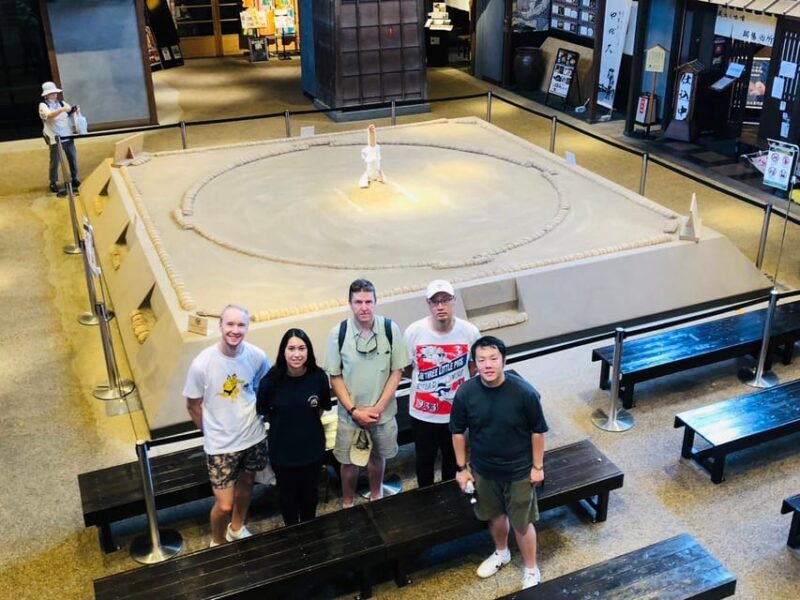
This experience is ideal for those who want a close-up, authentic look at sumo wrestling, especially if you appreciate cultural traditions and sporting history. It’s perfect for sports fans, history buffs, or anyone seeking a meaningful connection with Japan’s heritage. Be aware that it’s not suitable for wheelchair users or very young children, but most able-bodied travelers will find it engaging and well worth the price.
The Sum Up
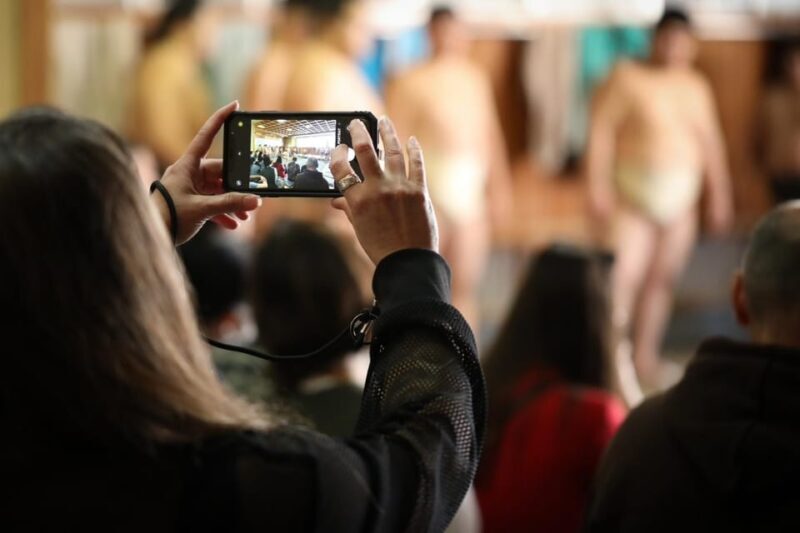
The Tokyo Sumo Morning Practice Tour offers a rare, genuine peek into one of Japan’s most iconic sports. With expert guidance, exclusive access, and a thoughtfully designed itinerary, it promises both educational insight and memorable moments. You’ll leave with a deeper understanding of sumo’s rituals and a collection of photos that truly capture the spirit of the sport.
If you’re after an authentic cultural experience that’s both informative and engaging, this tour will satisfy your curiosity and deepen your appreciation for Japan’s traditional sports. Just remember to sit back, ask questions, and enjoy the unique spectacle of sumo in its natural training environment.
FAQ
Is this tour suitable for children?
While most able-bodied travelers will enjoy it, very young children might find sitting on the floor for extended periods uncomfortable, and the traditional setting may not be ideal for babies or toddlers.
Can I take photos during practice?
Yes, you are encouraged to take photos, but flash photography is not permitted during the practice session.
How long is the entire tour?
The total experience lasts about three hours, including transfers, stable visit, and cultural stop.
Is transportation included?
No, transportation to and from the stable is not included, but the meeting point is easily accessible from Ryogoku Station.
Is the tour wheelchair accessible?
It is wheelchair accessible, but keep in mind the traditional tatami seating means some mobility challenges may arise.
What should I wear?
Comfortable clothes are recommended, especially since you’ll be sitting on the floor for the practice.
Can I ask questions during the tour?
Absolutely. The guide is eager to answer all your questions about sumo, rituals, and wrestler life.
What’s the best time of day for this tour?
Morning practice is the focus, so check the availability for different starting times but expect it to be in the early part of the day.
What’s included in the price?
Access to the sumo stable, live practice viewing, photos, and guidance from a journalist who’s an expert in sumo.
Is there an option to cancel?
Yes, you can cancel up to 24 hours in advance for a full refund, providing flexibility in your travel plans.
In sum, this tour is a fantastic way to step into the world of sumo, learn about its traditions, and see the sport in action—something that can add a rich layer to your Tokyo visit.
You can check availability for your dates here:More Morning in Tokyo
More Tours in Tokyo
More Tour Reviews in Tokyo
More Tokyo experiences we've covered
- Tokyo: Tsukiji Fish Market Food and Walking Tour
- Tokyo: Wine Experience at a Host Club with Champagne Call
- Private Ginza Architecture Tour
- Tokyo: Paint and Wine “Japan scenery and Seasons”
- Tokyo: Skytree Course Aerial Tour
- Tokyo: Shinjuku Food Tour (15 Dishes and 4 Eateries)
- Mount Fuji Sightseeing tour with English speaking guide
- Tokyo Private photo tour with Nightstreet Neon photographer
- Tokyo: The Best of Izakaya in Shinjuku Food & Cultural Tour
- Tokyo: Nikko Day Tour with English Driver and Flexible
- Tokyo: Tsukiji Fish Market Sushi Making Class with Pro Chef
- Tokyo: Hakone, Lake Ashi & Gotemba Outlets Day Trip
